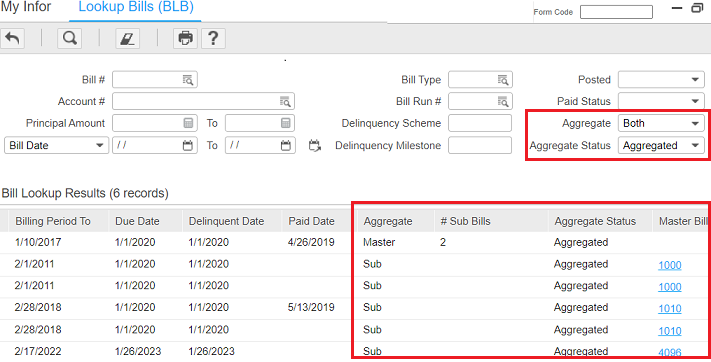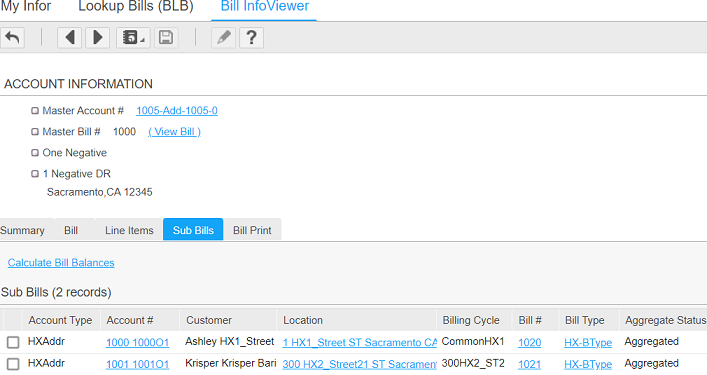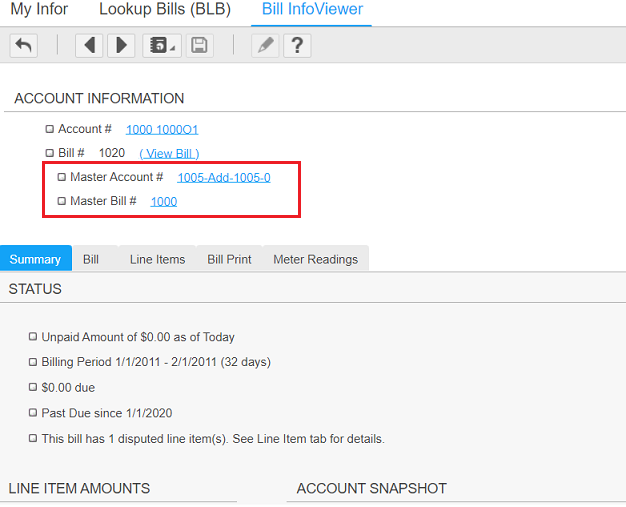Aggregate bills
The ability to create aggregate accounts and associate sub accounts with them was introduced in the April 2022 update. For example, a property owner might have multiple utility accounts for different properties, so an aggregate account can be added to manage the separate utility accounts from a single location.
See Aggregate accounts.
For the October update, the Bill Run Schedule task in the Batch Manager has been enhanced so it can generate sub bills for sub accounts, and associate them with a master bill for the aggregate account. Sub bills and master bills can be created separately or in the same bill run.
For example, a common practice is to first generate bills for the sub accounts, such as creating water bills for water accounts. If the utility accounts being billed are sub accounts, then the bills that are generated for them are marked as sub bills, with a status of Queued.
The sub bills remain in a Queued status until a master bill is created for the aggregate account. The sub bills are then linked to the master bill, and the status of each sub bill changes to Aggregated.
To manage aggregate bills, new search fields have been added in Lookup Bills. Use the Aggregate field to search for master bills, sub bills, or both. You can also search based on the aggregate status, such as Queued or Aggregated.

When you open a master bill in the Bill InfoViewer, you can view the sub bills on the new Sub Bills tab.

When you open a sub bill in the Bill InfoViewer, the master account number and master bill number are shown below the sub account number and the sub bill number.

When viewing an aggregate account in the Manage Account page, you can click the View Sub Bills link in the panel to see the associated sub bills.
